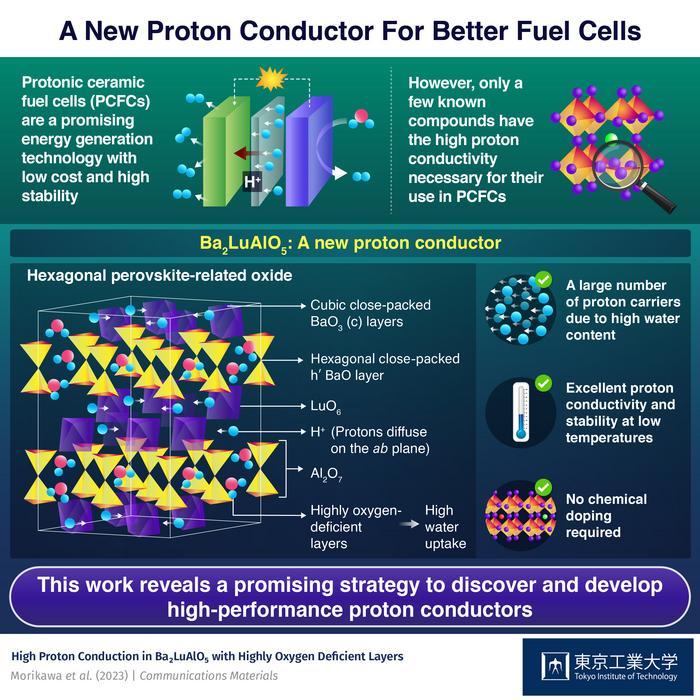Key Points
A promising new proton conductor has been found for potential application in safer and more efficient fuel cells
The novel material has remarkable conducting properties at low temperature
Computational simulations undertaken at ANSTO helped clarify the proton transport mechanism in the material
ANSTO has contributed to work by scientists from the Tokyo Institute of Technology on a promising proton conductor for next-generation ceramic fuel cells.
In a paper just published in Communication Materials, a team of researchers from Tokyo Institute of Technology, including Prof Masatomo Yashima reported the remarkable properties of a new hexagonal perovskite-related oxide, Ba2LuAlO5, that has provided interesting insights into proton conduction.
Experiments showed that this novel material had a remarkably high proton conductivity even without any additional chemical modifications. Molecular dynamics simulations revealed the
underlying reasons. These new insights may pave the way to safer and more efficient
energy technologies.

Prof Max Avdeev, Neutron diffraction group manager at ANSTO's Australian Centre for Neutron Scattering and a co-author on the paper said, "Proton conductors for next generation fuel cells have been identified as an alternative to oxide fuel cells. Our long-term collaborators at the Tokyo Tech have found and characterised experimentally a promising new material. Molecular dynamics simulations performed using the ANSTO computing cluster helped understand the mechanism of proton transport, which is essential for further improvement of the remarkable conductive properties of this material and the development of new compositions."
Scientists across the world are trying to develop environmentally friendly technologies that produce energy safely and more efficiently. Among them, fuel cells have been steadily gaining traction since the 1960s as a promising approach to producing electricity directly from electrochemical reactions.
However, typical fuel cells based on solid oxides have a notable drawback in that they operate
at high temperatures, usually over 700 °C. In contrast, protonic ceramic fuel cells (PCFCs) use special ceramics that conduct protons instead of oxide anions. They have a much lower operating temperature in the range of 300 to 600 °C.
However, only a few proton-conducting materials with reasonable performance are currently known.
Prof Yashima and colleagues discovered the new conductor while focusing on finding compounds with a lot of intrinsic oxygen vacancies. Experiments on samples revealed that this material has a high proton conductivity in its bulk at low temperatures without additional chemical refinements such as doping.
Using molecular dynamics simulations and neutron diffraction measurements, they found that the oxide absorbed a lot of water through a high number of intrinsic oxygen vacancies and the higher water content increased its proton conductivity through various mechanisms.






